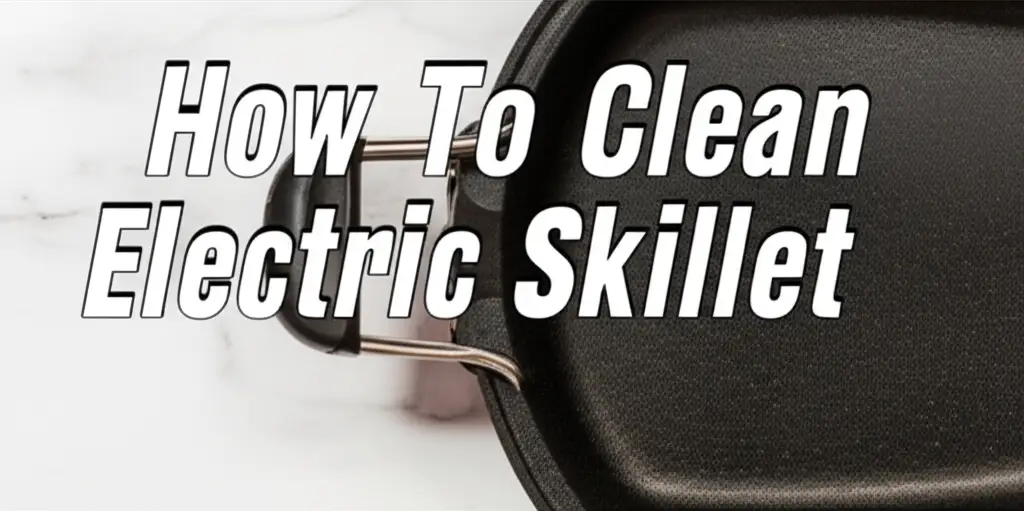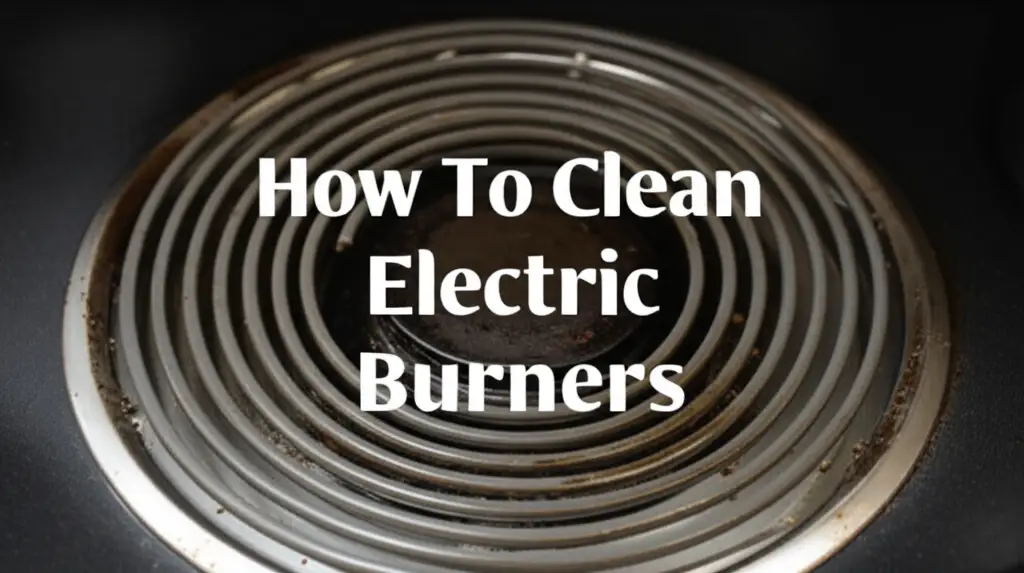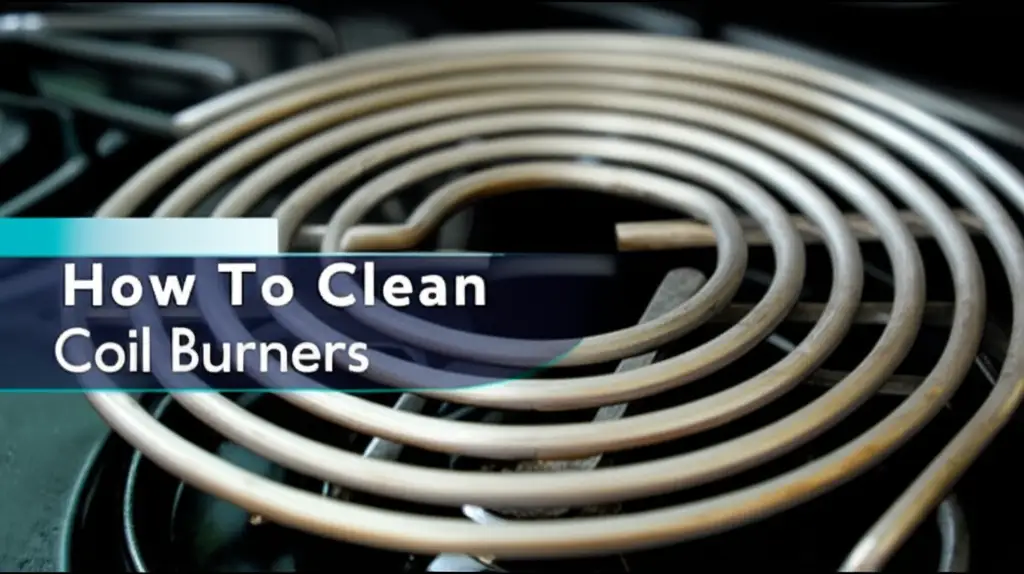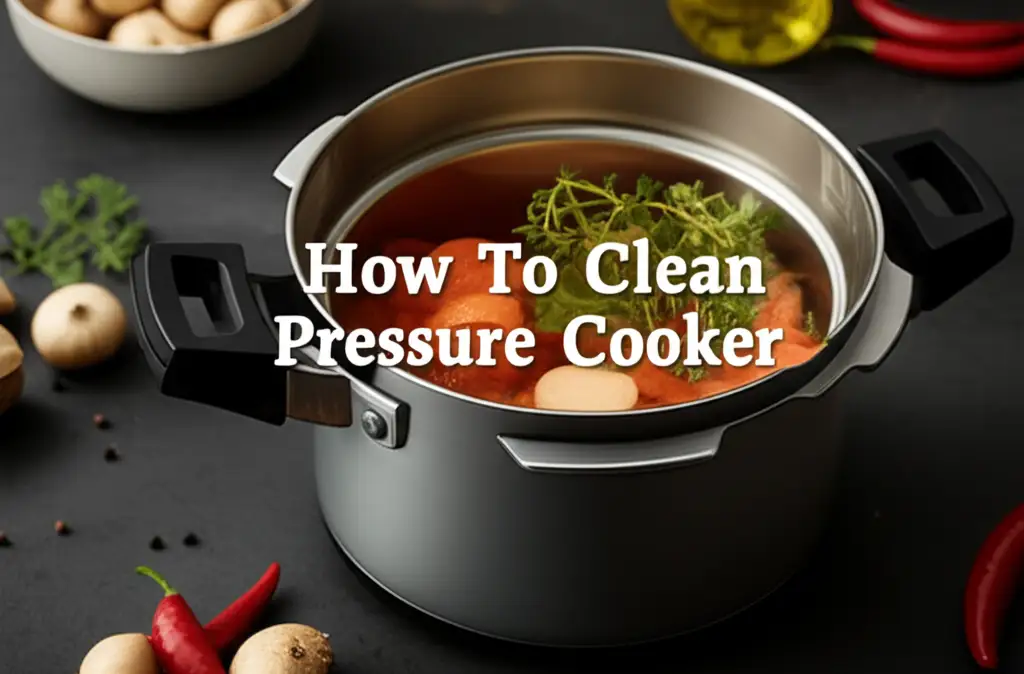· Kitchen Cleaning · 14 min read
How To Clean Electric Skillet

Unlock the Secrets: How To Clean Electric Skillet Like a Pro
An electric skillet is a versatile kitchen appliance. It cooks everything from breakfast to dinner. Keeping it clean helps it work well and last longer. A dirty skillet can affect food taste and cooking performance. Knowing how to clean electric skillet properly ensures hygienic cooking and extends your appliance’s life.
This article shares simple ways to clean your electric skillet. We will cover basic cleaning after each use. We will also look at how to tackle tough, stuck-on food. You will learn what cleaning products work best. We will also discuss common mistakes to avoid. My goal is to help you keep your electric skillet spotless.
Takeaway
- Always unplug and cool the skillet before cleaning.
- Use mild soap and soft sponges for daily cleaning.
- Soak stubborn food residue to loosen it.
- Avoid abrasive cleaners and tools to protect surfaces.
- Dry all parts completely before storing the skillet.
What is the simplest way to clean an electric skillet?
The simplest way to clean an electric skillet involves unplugging it and letting it cool. Then, wipe away food crumbs with a paper towel. Add a few drops of mild dish soap to warm water. Use a soft sponge to wipe the interior. Rinse with a damp cloth and dry thoroughly.
Safety First: Preparing Your Electric Skillet for Cleaning
Before you begin any cleaning, safety is key. An electric skillet uses electricity. Water and electricity do not mix. You must take steps to prevent shocks or damage. This preparation makes cleaning safe and effective.
First, always unplug your electric skillet from the wall outlet. Never clean a plugged-in appliance. The heating element can cause severe burns or electric shock. Make sure the cord is completely disconnected from the skillet base as well.
Next, allow the skillet to cool down completely. Hot surfaces can burn your skin. Also, cleaning a hot surface can warp materials or damage non-stick coatings. Give it at least 30 minutes to an hour after cooking. You can speed cooling by letting it sit on a heat-safe surface. Do not run cold water over a hot skillet. This sudden temperature change can cause cracks or warping.
Finally, check if any parts are removable. Many electric skillets have detachable temperature probes. Some models have lids or handles that come off. Separating these parts makes cleaning easier and safer. You can wash removable parts more thoroughly without risking the main unit. This step prevents water from reaching sensitive electrical components. Your appliance will last longer with this care.
Gentle Care: Basic Cleaning Your Electric Skillet After Each Use
Regular cleaning after every use keeps your electric skillet in top condition. This prevents food from drying and hardening. It also stops odors from building up. A quick clean now saves you effort later. This method works well for non-stick surfaces.
Once the skillet is cool and unplugged, remove any loose food particles. Use a paper towel or a soft rubber spatula for this. Do not use metal spatulas. They can scratch the non-stick coating. My aim is always to protect the cooking surface.
Next, add a small amount of warm water to the skillet. Use a few drops of mild dish soap. Do not use harsh detergents or abrasive cleaners. These can damage the non-stick surface. They can also leave chemical residues. I find that mild soap like Dawn works best.
Now, take a soft sponge or a non-scratch scrub pad. Gently wipe the interior surface. Focus on areas with food residue. For exteriors, wipe with a damp cloth. Never immerse the entire electric skillet base in water. This will damage the electrical components. Some electric griddles share similar cleaning principles for daily use. You can learn more about general cleaning of similar appliances by reading about how to clean an electric griddle.
After cleaning, use a clean, damp cloth to wipe away all soap residue. Make sure no soapy film remains. Then, dry the skillet completely with a clean towel. Air drying can lead to water spots. Proper drying prevents rust and mildew. A dry skillet is ready for its next use.
Banish Buildup: How to Clean Stubborn Stuck-On Food from Your Electric Skillet
Sometimes, food sticks to the skillet surface. This can happen with burnt sauces or baked-on grease. Basic wiping will not remove these tough stains. You need stronger, but still gentle, methods. My goal is to remove the crud without damaging the skillet.
For most stuck-on food, the best first step is soaking. Pour warm water into the skillet. Add a few drops of dish soap. Let it sit for at least 30 minutes. For very stubborn messes, let it soak for a few hours or even overnight. This softens the food particles. The soaking process helps to loosen the bond between the food and the skillet surface. You can compare this to how one might approach how to clean crud off a cast iron skillet. The principle of softening the hardened material is similar.
After soaking, use a non-abrasive sponge or nylon scrubber. Gently scrub the affected areas. Avoid using metal scourers or harsh brushes. These tools scratch non-stick coatings. Scratches make food stick more in the future. They also make the coating wear out faster. My preference is always for gentle yet effective tools.
For truly tough spots, a baking soda paste can work wonders. Mix baking soda with a little water to form a thick paste. Apply the paste directly to the stuck-on food. Let it sit for 15-20 minutes. Baking soda is a mild abrasive that helps lift grime. Then, scrub gently with a soft sponge. Rinse thoroughly with a damp cloth to remove all paste residue. Ensure the skillet is completely dry before storage.
Deep Dive: Thoroughly Cleaning Your Electric Skillet for Longevity
Deep cleaning is necessary a few times a year. It removes accumulated grease, minor stains, and unseen grime. This ensures your electric skillet remains hygienic. It also helps maintain its cooking efficiency. A deep clean can make your skillet feel new again.
Start by following the basic cleaning steps. Unplug, cool, and remove loose food. Wipe down the interior with mild soap and water. Pay attention to corners and edges where food might hide. This first pass removes the easy dirt. It prepares the skillet for deeper treatment.
For a thorough degreasing, you can use a solution of vinegar and water. Mix equal parts white vinegar and warm water in the skillet. Let this solution sit for 15-20 minutes. Vinegar is a natural degreaser and deodorizer. It helps break down greasy residue. After soaking, gently scrub with a soft brush or sponge. This method is effective for internal cleaning. Many kitchen appliances, like an electric griddle, benefit from similar deep cleaning techniques. For more tips on maintaining other electric cooking tools, consider exploring resources on how to clean an electric griddle.
If your skillet has stubborn burnt-on spots, consider using a specialized non-stick cleaner. Read the cleaner’s label carefully. Make sure it is safe for your skillet’s surface. Apply according to the product directions. These cleaners often contain enzymes that break down carbonized food. Always rinse extremely well after using any chemical cleaner. You do not want cleaner residue on your cooking surface.
After cleaning, inspect the skillet. Ensure all food and cleaner residue is gone. Wipe the entire surface with a clean, damp cloth. Then, dry it completely. Pay attention to the underside and edges. Lingering moisture can lead to mold or rust. Proper deep cleaning extends the life and performance of your electric skillet.
Spotless Surfaces: Cleaning Different Parts of Your Electric Skillet
An electric skillet is more than just its cooking surface. It has a lid, handles, and an exterior body. Each part needs specific care. Proper cleaning of all components ensures the whole appliance stays clean and functional. Neglecting these areas can lead to grime buildup.
The lid is often detachable and may be dishwasher-safe. Check your manufacturer’s instructions first. If it is dishwasher-safe, place it on the top rack. If not, wash it by hand with warm, soapy water. Use a soft sponge to clean both sides. Pay attention to the rim where food splatters can collect. Rinse the lid well and dry it completely. A clean lid ensures proper heat retention.
Handles usually do not get as dirty as the cooking surface. However, they can accumulate grease and food splatters. Wipe handles with a damp cloth and mild soap. For plastic or Bakelite handles, avoid harsh chemicals. These chemicals can damage the material over time. Dry handles thoroughly to prevent water marks. This also helps maintain a firm grip.
The exterior of the electric skillet, including the base, also needs cleaning. This part houses the heating elements and electrical connections. Never submerge the entire base in water. Use a damp cloth to wipe down the exterior. For stubborn grease on the bottom, a degreaser spray designed for kitchen appliances can help. Apply it to the cloth first, not directly to the skillet. Then wipe the surface. Many types of pans face challenges with residue on their undersides. Learning how to clean the bottom of a pan can provide general insights applicable to the exterior of your electric skillet.
Wipe all external surfaces dry with a clean towel. Pay special attention to areas around controls or vents. You do not want water to seep into electrical components. A clean exterior makes your skillet look good. It also prevents the spread of bacteria. My focus is on keeping every part of my skillet pristine.
Avoid These Blunders: Common Mistakes When Cleaning Electric Skillets
Even with good intentions, people make mistakes when cleaning. Some common errors can damage your electric skillet. These mistakes can reduce its lifespan or even make it unsafe. Knowing what not to do is as important as knowing what to do.
One major mistake is immersing the entire electric skillet in water. Many modern electric skillets are not submersible. The electrical components inside the base are not waterproof. Submerging it will cause electrical damage. This damage can lead to malfunction or a fire hazard. Always check your model’s manual for specific instructions on submersion. If it says “do not immerse,” follow that rule strictly.
Using abrasive cleaners or tools is another common error. Steel wool, scouring pads, and harsh chemical sprays can scratch non-stick coatings. Once scratched, the non-stick surface loses its effectiveness. Food will start to stick. The coating may also chip off into your food. Use only soft sponges, cloths, or nylon scrubbers. Stick to mild dish soap or non-abrasive natural cleaners. This protects the delicate surface.
Cleaning a hot skillet is also a mistake. Cleaning it while hot can cause warping or cracking. The sudden temperature change from hot to cold water stresses the materials. Wait until the skillet is completely cool to the touch. Patience prevents damage and ensures safety.
Ignoring the manufacturer’s instructions is a big mistake. Every electric skillet model can be slightly different. The manual provides specific care guidelines. It tells you which parts are dishwasher-safe and which are not. It also advises on safe cleaning agents. Always consult your product manual before cleaning. My rule is to always read the instructions. This prevents costly errors and keeps your appliance working correctly.
Finally, not drying the skillet completely is a common oversight. Moisture left on the skillet can lead to water spots, rust, or mold. This is especially true for metal parts or crevices. Always towel dry all parts thoroughly. For areas hard to reach, air dry upside down on a rack. Ensure no moisture remains before storing the appliance.
Extend Life: Regular Maintenance Tips for Your Electric Skillet
Cleaning is only part of maintaining your electric skillet. Proper maintenance keeps it performing well. It also extends its useful life. A well-maintained skillet cooks better and lasts longer. These tips go beyond just cleaning.
Proper storage is important. Once your electric skillet is completely dry, store it in a safe place. Avoid stacking heavy items on top of it. This can scratch the non-stick surface or damage the heating element. If stacking, place a soft cloth or paper towel between the skillet and other items. Store the temperature probe separately to prevent damage. A dedicated cabinet space is ideal.
For non-stick skillets, avoid using metal utensils. Even if the non-stick coating seems durable, metal can cause tiny scratches over time. These scratches accumulate and degrade the non-stick properties. Use silicone, wood, or plastic utensils instead. These materials are gentle on the surface. This simple change significantly extends the life of your non-stick coating.
Some electric skillets, especially those with cast iron or stainless steel interiors, might benefit from occasional seasoning. Seasoning creates a natural non-stick layer. If your skillet is cast iron, follow guidelines for seasoning. You can find more specific details on cast iron maintenance by looking into how to clean a cast iron skillet. This process involves applying a thin layer of cooking oil and baking it. Check your skillet’s specific material and manufacturer recommendations before attempting to season. Most modern electric skillets are non-stick and do not require seasoning.
Inspect the power cord regularly. Look for any fraying, cuts, or exposed wires. A damaged cord is a safety hazard. If you find damage, do not use the skillet. Replace the cord if possible, or consider replacing the entire appliance. Also, check the temperature probe for bending or damage. A faulty probe can lead to inaccurate cooking temperatures. My practice is to inspect appliances before each use. This helps catch problems early. By following these maintenance tips, your electric skillet will serve you faithfully for many years.
FAQ Section
Can you put an electric skillet in the dishwasher?
Most electric skillet bases are not dishwasher-safe. Submerging the base can damage electrical components. However, some lids and detachable parts might be. Always check your specific model’s user manual. Hand washing with mild soap and water is generally the safest method for the skillet itself.
How do you clean a burnt electric skillet?
To clean a burnt electric skillet, let it cool completely. Fill it with warm water and a few drops of dish soap. Let it soak for several hours or overnight. Gently scrub the burnt areas with a non-abrasive sponge or nylon scrubber. For very tough spots, a baking soda paste can help lift the residue. Rinse well and dry thoroughly.
What cleaning solutions are safe for non-stick electric skillets?
Mild dish soap and warm water are the safest cleaning solutions for non-stick electric skillets. White vinegar mixed with water can also help with grease. Avoid abrasive cleaners, bleach, or harsh chemicals. These can damage the non-stick coating and leave harmful residues.
How often should I clean my electric skillet?
You should perform basic cleaning on your electric skillet after every use. This prevents food buildup and maintains hygiene. Deep cleaning can be done every few months or as needed. This depends on how frequently you use the skillet and the types of foods you cook.
Can I use steel wool on my electric skillet?
No, you should never use steel wool or abrasive scouring pads on your electric skillet. These materials will scratch and damage the non-stick coating. Once the coating is scratched, food will begin to stick, and the skillet’s performance will diminish. Always use soft sponges or non-scratch scrubbers.
How do I remove odor from my electric skillet?
To remove odors from your electric skillet, first clean it thoroughly. Then, create a paste using baking soda and a small amount of water. Spread this paste over the interior surface and let it sit for 15-30 minutes. Scrub gently, rinse well, and dry. Alternatively, fill the skillet with a solution of equal parts white vinegar and water, let it sit, then clean and dry.
Conclusion
Keeping your electric skillet clean is a simple yet vital task. It ensures your appliance works well and lasts for years. We covered how to clean electric skillet safely, from daily care to tackling stubborn messes. Remember to always unplug and cool the skillet before starting. Use mild cleaning agents and soft tools to protect the non-stick surface.
Regular cleaning prevents food buildup and keeps your food tasting great. It also helps your electric skillet heat evenly and perform its best. By avoiding common mistakes like submerging the unit or using harsh abrasives, you protect your investment. My experience shows that a little care goes a long way. Make cleaning your electric skillet a regular habit. This small effort brings big rewards in your kitchen. Your clean skillet is ready for your next culinary adventure.
- electric skillet cleaning
- kitchen appliance care
- remove stuck-on food
- non-stick skillet cleaning
- deep cleaning electric skillet




